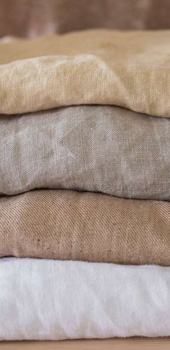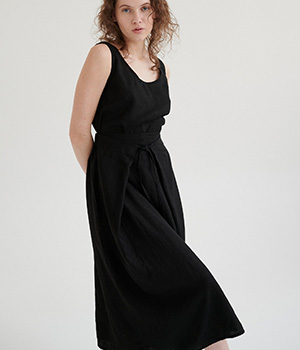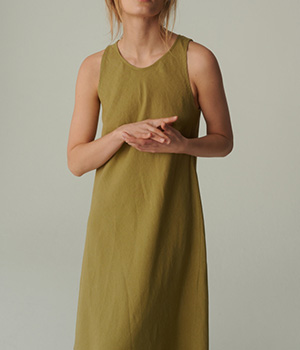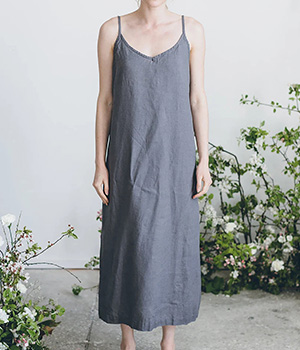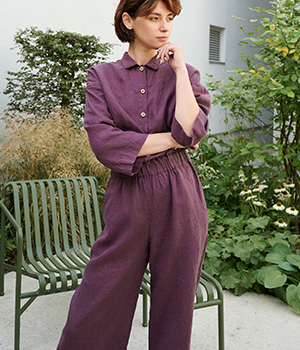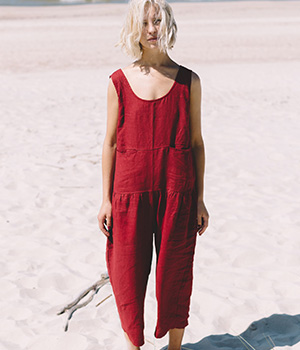How long does linen clothing last?
How Long Does Linen Clothing Last? A Guide for Sustainable Fashion Brands.
Introduction: Why Longevity Matters in Sustainable Fashion
In the era of fast fashion and disposable clothing, durability is the new luxury. For fashion brands that embrace sustainability, longevity isn’t just a bonus—it’s a core value. One of the most common questions asked by conscious consumers and designers alike is: how long does linen clothing last?
Linen, made from flax, is one of the oldest textiles known to humankind. But beyond its historical legacy, it’s revered today for its strength, breathability, and eco-friendly credentials. Brands looking to build long-lasting collections with minimal environmental impact are increasingly turning to linen. But does its elegance match its endurance?
In this article, we explore the actual lifespan of linen garments, what influences their durability, how to extend their use, and why linen is a strategic investment for any forward-thinking fashion brand.
1. The Natural Durability of Linen: What Makes It Last?
Linen is inherently strong—this is not just marketing language, but a fact of fiber science. The flax fibers used to create linen are naturally longer and thicker than cotton fibers, which translates to higher tensile strength. This gives linen an impressive ability to withstand wear and tear.
One of the unique qualities of linen is that it actually gets stronger when wet, unlike many other natural fibers that weaken with moisture. This is particularly beneficial in humid climates or when garments are exposed to regular washing.
Linen is also:
1.Highly resistant to pilling (unlike synthetics or low-quality cotton)
2.Naturally breathable, which prevents moisture build-up and mold
3.Slow to degrade under natural conditions, making it suitable for both clothing and home textiles
This combination of structural integrity and organic resilience makes linen one of the most durable eco-fabrics available on the market today.

2. How Long Can Linen Clothing Really Last?
So, practically speaking, how many years can a linen shirt or dress last?
The short answer: 10 to 30 years—sometimes even longer with proper care.
Many people inherit vintage linen tablecloths, shirts, or napkins from previous generations. That’s because linen, unlike synthetic or low-grade cotton fabrics, does not break down quickly. In fact, it softens and ages beautifully, gaining character with each wear.
Some boutique fashion brands promote linen under a “buy less, wear longer” ethos, encouraging customers to view it as an investment piece, not a disposable trend. When brands position linen in this way, it becomes a symbol of mindful consumption and refined longevity.
3. What Factors Influence the Lifespan of Linen Garments?
Although linen has the potential to last decades, its actual lifespan depends on multiple factors:
✅ Fabric Quality
Not all linen is created equal. High-quality European flax (especially from Belgium, France, and Lithuania) is more durable and refined than mass-produced flax from lower-grade sources. A higher thread count and tighter weave will significantly improve wear resistance.
✅ Construction & Stitching
Even premium linen won’t last if the garment isn’t constructed properly. Double-stitched seams, reinforced stress points, and properly finished edges contribute to a longer-lasting product.
✅ Usage Frequency
A shirt worn twice a week will naturally wear out faster than one worn once a month. However, linen’s breathable nature makes it suitable for frequent wear if cared for correctly.
✅ Care and Maintenance
Improper care (like hot tumble drying or bleaching) can dramatically shorten the garment’s life. On the other hand, gentle washing, air drying, and proper storage can preserve the fabric’s strength and beauty.
✅ Dye and Finish
Chemical-heavy dyes or aggressive finishes can compromise fiber strength. Opting for low-impact, plant-based dyes or raw finishes can enhance longevity while keeping the fabric sustainable.
In essence, the lifespan of linen isn’t fixed—it’s a partnership between the maker, the brand, and the wearer.

4. How to Extend the Life of Linen Clothing
Brands can educate consumers on simple, effective practices to maximize the lifespan of their linen pieces. Consider adding care labels or QR codes linking to digital care guides. Here are key practices:
🧼 Wash Gently
Use cold water and natural, mild detergents. Avoid fabric softeners, which can coat and weaken the fibers.
🌬️ Air Dry Only
Tumble dryers can shrink and damage linen. Instead, hang garments to dry in shaded, ventilated areas to preserve elasticity and color.
♻️ Repair, Don’t Replace
Encourage consumers to mend minor tears or fading with patches or visible mending techniques. This not only extends the garment’s life but adds emotional value.
🧺 Store Properly
Fold linen instead of hanging (to prevent stretching), and store in breathable cotton bags away from direct sunlight.
🌀 Embrace Natural Aging
Rather than hiding signs of use, promote the natural beauty of softened fibers, faded colors, and relaxed textures. These signs signal authenticity and real life, not wear and tear.
By communicating these habits clearly, brands not only extend the life of products but also foster customer loyalty and conscious brand identity.

5. Linen vs Cotton vs Polyester: A Durability Comparison
Let’s place linen in perspective by comparing it with two of the most common materials in fashion.

This table highlights that while polyester may outlast linen in years, it does so at the cost of environmental degradation. Meanwhile, linen offers both durability and eco-responsibility—making it ideal for conscious consumers and brands.

6. Why Should Brands Invest in Long-lasting Linen?
Choosing linen isn’t just about the fabric—it’s about the message your brand sends.
🌱 Align With Sustainability Values
Linen fits perfectly into the “slow fashion” philosophy. It reduces the need for frequent replacements and encourages mindful consumption.
🧵 Elevate Product Value
When your pieces are designed to last 10+ years, you're not just selling clothes—you're offering heirlooms. This justifies premium pricing and strengthens brand positioning.
💡 Build Brand Trust
Clothing that holds up over time means fewer returns and higher customer satisfaction—especially important for online and DTC brands.
🔁 Encourage Repeat Sales through Longevity, not Trend
Instead of offering trend-dependent collections, brands can rotate timeless pieces in new shades, cuts, or collaborations, anchored in quality.
📚 Educate and Inspire
By promoting care guides, behind-the-scenes fabric education, and styling tips, you cultivate a loyal, informed audience who values your craftsmanship.

Conclusion: Linen, Built to Last
So—how long does linen clothing last? With the right quality, craftsmanship, and care, a single piece can serve your customer for decades.
For brands, this isn't just a fabric choice. It's a strategic decision that aligns durability with sustainability, timelessness with trend resistance, and quality with brand trust.
Linen clothing isn’t disposable—it’s dependable.
If your fashion brand is ready to embrace sustainability with substance, linen is the future-proof fabric you need.

✅ Optional Add-On: Brand Call-to-Action Block
Want to build a long-lasting linen collection for your brand?
Contact Linenwind for premium OEM/ODM services using certified European flax and 20 years of industry expertise.




